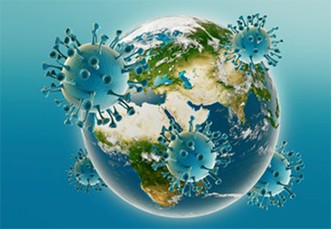COVID-19: Reopening for Business in a Post-Coronavirus World
Make no mistake: The world of work will never be the same again. Just as 9/11 changed how the world travels, the COVID -19 pandemic will change how we work. These changes will extend to how individuals commute, enter workplaces, interact with others, manage tasks, and more. In a post COVID-19 world, work not only has to be safe, it has to be "clean and assured."
Clean and Assured
After 9/11, the public needed assurance that air travel was safe and secure. A new level of screening affected every traveler and airport employee. Similarly, post-pandemic, employers will need to provide assurance that workplaces are clean and assured. Even if the population achieves herd immunity from COVID-19, people will expect facilities to maintain high standards.
After 9/11, the public needed assurance that air travel was safe and secure. A new level of screening affected every traveler and airport employee. Similarly, post-pandemic, employers will need to provide assurance that workplaces are clean and assured. Even if the population achieves herd immunity from COVID-19, people will expect facilities to maintain high standards.
To start, firms will need to adopt rigorous cleaning procedures for customers and employees. In response to COVID-19, the CDC has promulgated recommendations for how cleaning should be done.
These procedures will need to be transparent to all parties. This may take the form of certification, such as the safety inspection notices posted in elevators, or a rating, like a health department posting in a restaurant. As with other safety items, these practices will need to be audited.
In the longer term, it is reasonable to assume that regulators will redefine minimum cleanliness standards for things ranging from disinfection processes to employee hygiene. Furthermore, employee adherence to stricter sanitary practices will need to have clearly defined behaviors. These could range from something as simple as hand washing instructions to complex cleaning techniques for specific machines, processes,
or industries.
or industries.
Leaders will need to reinforce behaviors and ensure there is transparency of actions and situations, as in similar leadership methods within health and safety. This means cleanliness conversations and reviews. They will need to define and distribute new cleanliness metrics, as well as sharing firm performance with employees. In addition, supervisors will need to implement a host of new standards, which will require them to develop a new set of skills around management of cleaning, disinfection, and inspection.
We can also expect to see increased use of personal protective equipment (PPE), including expanded use of gloves and face masks, becoming the norm in many customer-facing environments. Procedures for inbound and outbound materials will also need to change. Much like "hazard analysis of critical control points" (HACCP), exposures to viruses must be minimized across the supply chain. This could mean minimizing touch points, creating disinfection protocols, and diversifying sourcing.
These procedures will need to be clearly defined and communicated, with expectations established for employee accountability.
Facility upgrades will also need evaluation, from better HVAC and air filtration to
protective compartments for workers.


